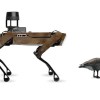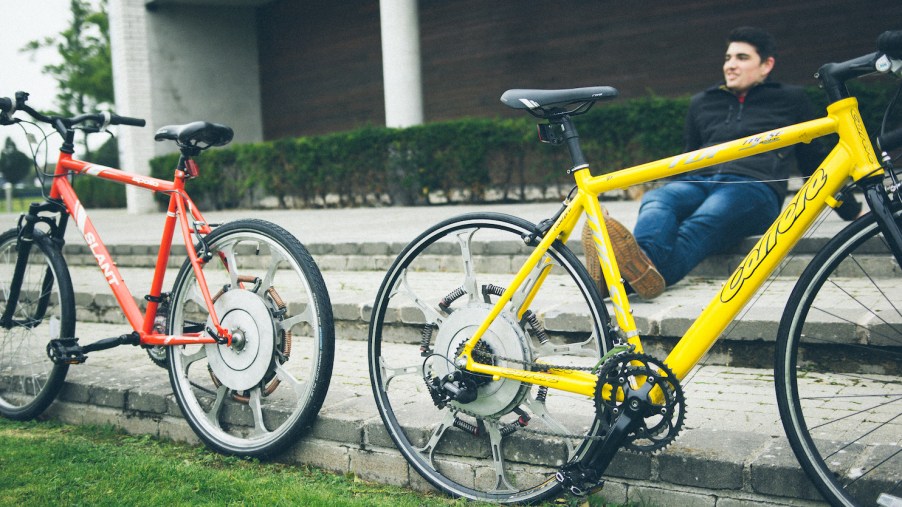
Can This Spring-Powered Bicycle ‘SuperWheel’ Work On Car To Save Gas?
A designer in Ireland has come up with a bicycle wheel he calls the “Superwheel” that uses your weight to propel a bicycle. Because it is a mechanical device, there is no electrical system. The rider’s movement is converted into energy. Could a similar wheel add range to an electric vehicle?
Who came up with the Superwheel for bicycles?
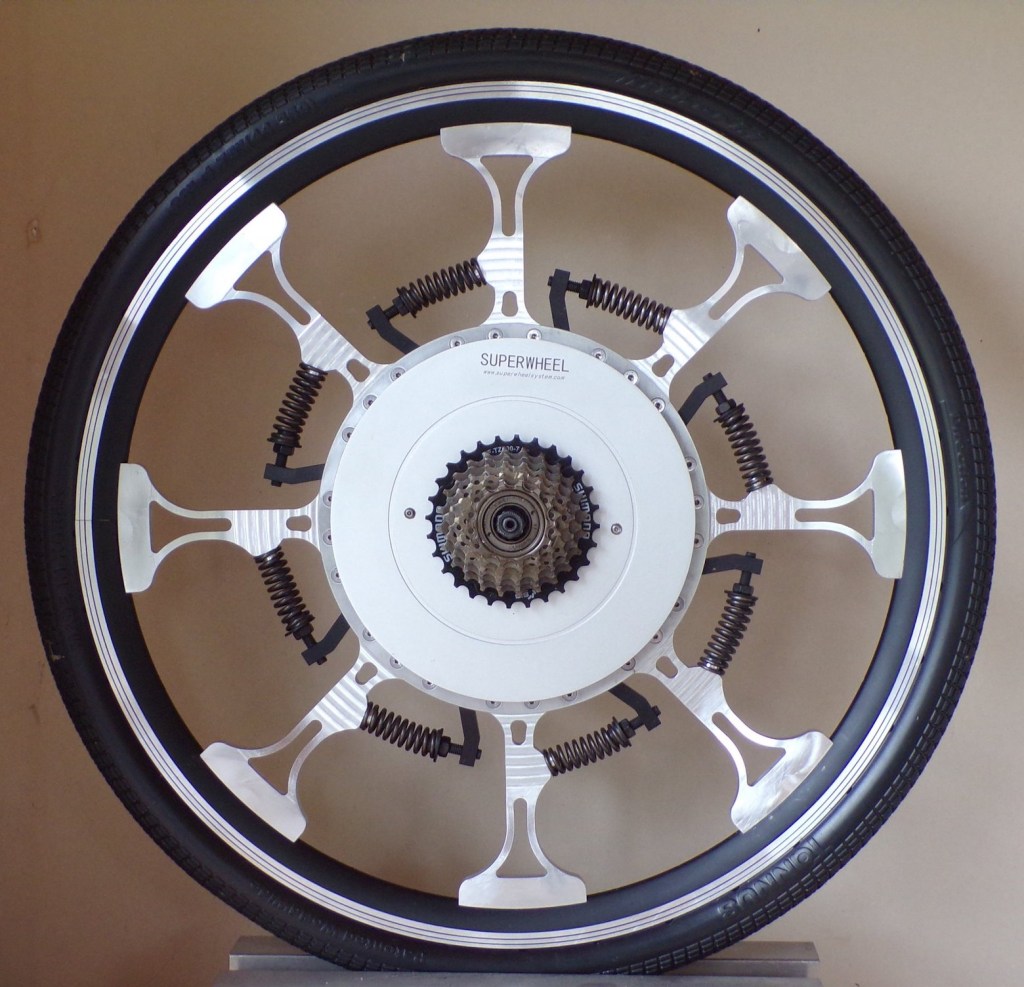
The Superwheel is a development of Simon Chan. It uses the patent-pending “weight to energy conversion technology” or WTECT. The Superwheel was invented as an alternative to e-bikes for conventional bicycles. There is nothing to adapt to. Just change out the wheels and you’re off.
By leveraging the rider’s weight into propulsion, the efficiency improvement comes out to over 30 percent over a conventional bicycle wheel. It mainly consists of three parts, a spring, a lever, and the internal drive. Of course, it takes eight of the spring/lever combos.
How does the Superwheel for bicycles work?
In simple terms, the levers at the top of the wheel compress the springs while the lower springs are decompressing. This moves the wheel forward. Propulsion is created by the energy of that movement. According to the Superwheel video, “Using the center as the pivot, this converts energy and reduces the frictional force in the opposite direction and facilitates the rotation.”
The whole wheel is lightweight according to Designboom. As a result, it is easy to lift, and it just bolts up to any bike without any type of conversion. The range is dependent on your own stamina. And it also acts as a suspension of sorts.
Adjustments in tire and spring pressure increase the energy expelled
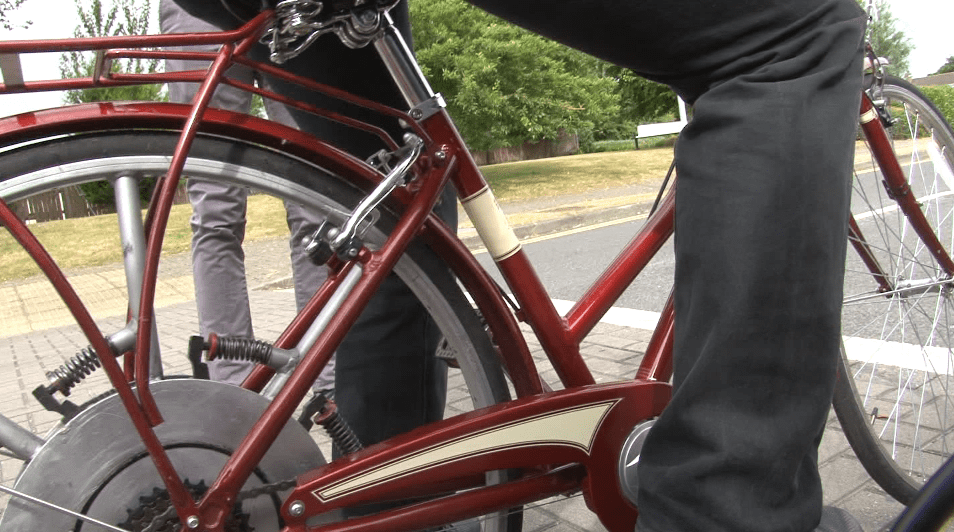
It is less efficient on rough roads. You can adjust the tire pressure and spring pressure. To create more power, you add more air pressure to the tires. You can adjust the springs with a conventional spanner wrench.
So the whole point is that with less physical effort the ride becomes more fun and more efficient. With only human power, bikes have been finding new ways to pare down weight to increase performance. But we haven’t seen ways to convert actual weight into propulsion.
Could this work for cars?
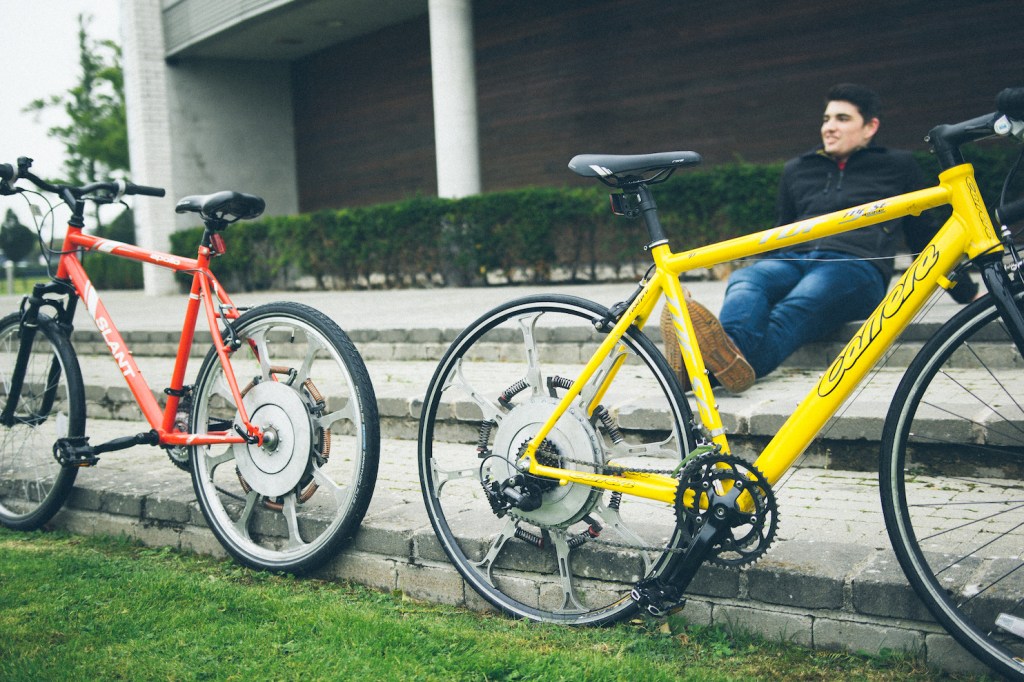
So could this work for motorized vehicles, especially electric cars that require heavy batteries? Car companies try to cut as much weight as possible out of the vehicle to increase range. But converting that extra weight into propulsion would be a new approach.
It isn’t hard to imagine the Superwheel scaled up to handle the increased weight of a car. Maybe there would need to be two or three rows of the lever/spring mechanism per wheel. And yes, the cost would increase from that of a stationary alloy wheel. But the gain in energy and range could be worth the added expense?
As for the bicycle Superwheel, versions of it are available for right at $500. To boost the effort there is a crowdfunding page. If this does turn out to be the boon it appears to be, we’ll be hearing a lot more about the Superwheel.

